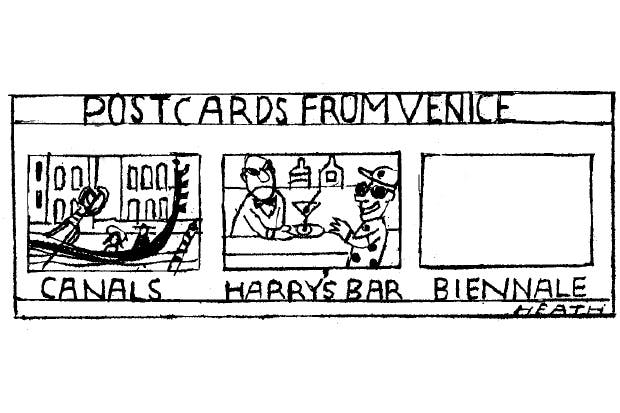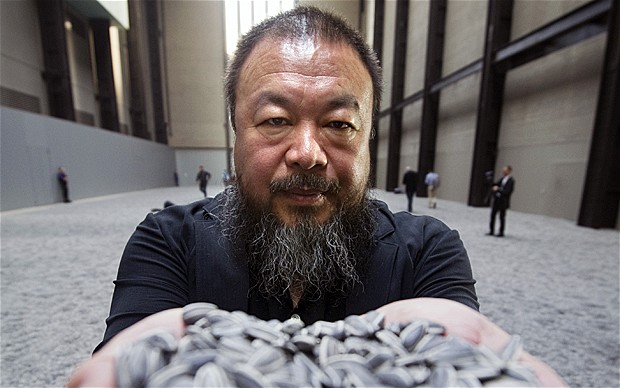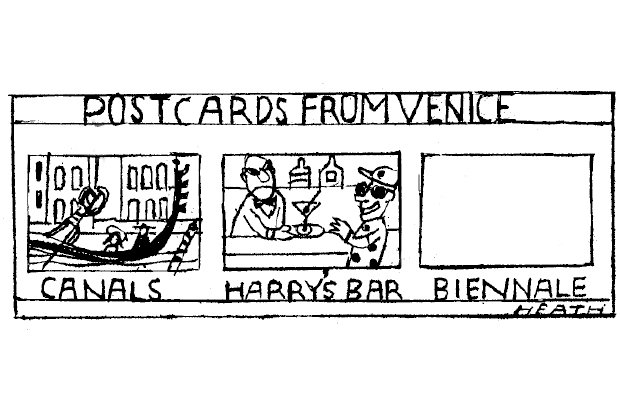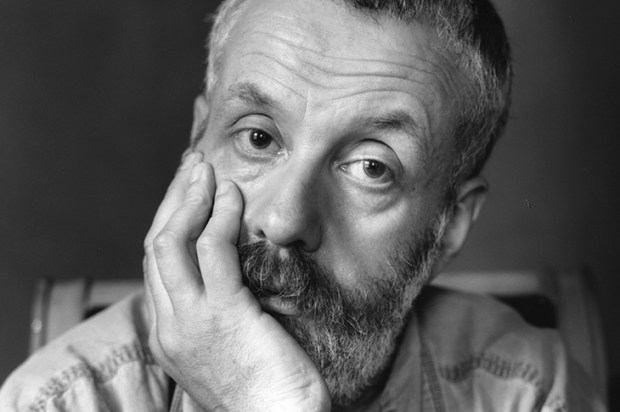As a purveyor of lairy souvenirs Venice outdoes even Lourdes. The scores of shops and booths that peddle this lagoonal kitsch are manned by graduates of hard-sell whose market-barker schtick does not need to include descriptions as their goods are self-explanatory.
Every other year they coexist with a different sort of operation: the galleries, ateliers, showrooms and studios of the Biennale. And with them an ever-burgeoning cadre of soft-sell operatives, who compose the hieratic order of the curatocracy. There is no piece of approximate art or workshopped event that cannot be curated just as there is no foodstuff that cannot be sourced. At a recent ‘ideas festival’, I was enjoined to participate in a curated walk round a small town. I resisted temptation, sourced a packet of crisps in a vending machine and ate them on a platform at Ipswich station.
When, over a century ago, G.B. Shaw accused them of being ‘conspiracies against the laity’, the professions were the law, the church and medicine. Whatever their practitioners claimed, all other endeavours were still trades. Not that it really matters. Once a trade develops its own mores, patois, rites, sartorial code and forms of indenture, it pretends to the characteristics of those original learned professions: exclusive, impregnable, self-important, impasted with bogus tradition, in love with its own pinchbeck arcana and gimcrack mysteries. It can safely be said that the curating malarky has achieved all this and more.
Curators were, till a generation or so ago, urbane historians of the renaissance or donnish scholars of the Beaker people. The dusty smell of muniments rooms hung about them. Today they are — well, what are they? Achingly hip neophiliacs who have mastered the peculiar illiteracy that comes from having been the willing victims of critical theory, cultural studies and art history, which, as we all know, begins with Duchamp — and ends with him too. Where once museums and galleries were repositories of what already existed, they have mutated into stores of stuff commissioned by their amply funded curators who impose their pensée unique upon a public too timid to protest that this is a load of balls. That taste is of course avant garde — the thoroughly conventionsalised, institutionalised art of the establishment.
Curators have moved from the passive to the active. From being receptive to what is actually made to being controlling. From accepting random expressions of individual creativity that belong to no ‘school’ to proposing taxonomies and ordering up ‘site-specific’ works: where creation ends and curation begins is moot. The spectre of ‘collaboration’ looms. And so, too, does that of the century-old modernism and the anti-establishment posturing that is de rigueur throughout the establishment. This consensual frivolity is, of course, taken seriously; there can be no more damning proof than the risibly self-important language that the curatocracy employs to explain installations so mute they are meaningless. It is, laughably, called ‘art writing’: ‘…on the one hand cultural productions are symptomatic of these relations, while on the other analytic of them — having the potential of intervention and critique, again with a specific placement and angle, or, if you will, method of intervention and mode of address.’
No. Me neither. Curator shall speak unto curator.
Got something to add? Join the discussion and comment below.
Get 10 issues for just $10
Subscribe to The Spectator Australia today for the next 10 magazine issues, plus full online access, for just $10.














Comments
Don't miss out
Join the conversation with other Spectator Australia readers. Subscribe to leave a comment.
SUBSCRIBEAlready a subscriber? Log in